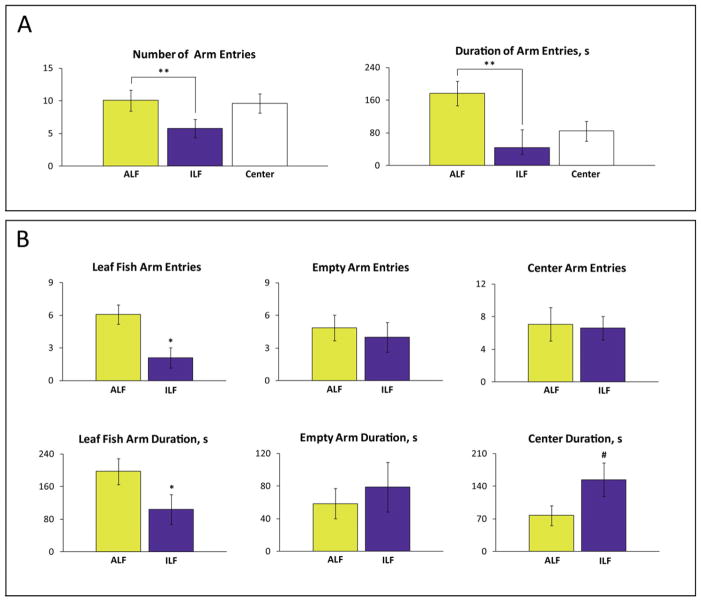Figure 4.
Behavioral effects of the predator avoidance in adult wild type (short-fin) zebrafish in the two-compartment choice test. Zebrafish were placed in the center of the tank and the exposed to a predator (placed in an adjacent arm) for 6 min. The number or entries to, and the time spent in, the predator vs. non-predator containing arms was assessed. (A) In this experiment, zebrafish were exposed to two different predators simultaneously, the Indian leaf fish (ILF) and African leaf fish (ALF), with each placed in separate, opposite arms of the tank. Zebrafish generally exhibit stronger avoidance toward the open center arm and the ILF (indigenous to their natural environment in the wild) compared to the ALF. (B) In this experiment, zebrafish were exposed to either the ILF or ALF on alternating trials, during which the single predator was placed into one arm of the test apparatus. The number of arm entries and duration is significantly affected by ILF vs. ALF predator exposure. Data are presented as mean ± SEM (n = 15 per group), *P<0.05, **P < 0.005, #P = 0.05–0.09 vs. control, U-test

